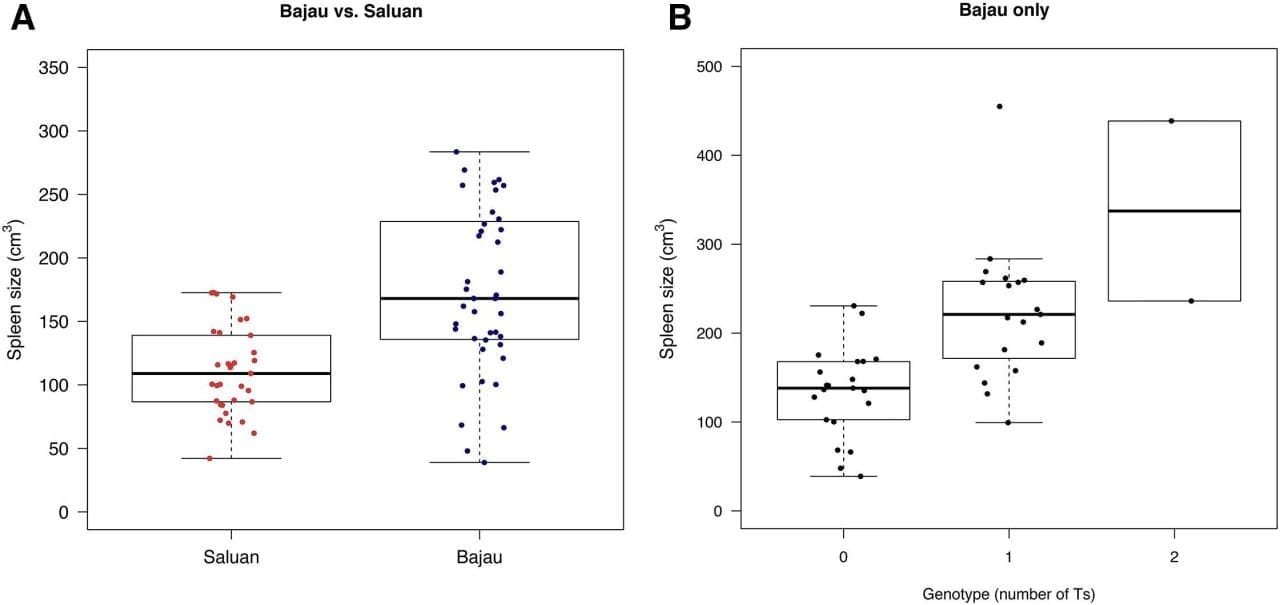Have you ever wanted a superpower? Me too!
Some human populations have genes that would make even Poseidon jealous!

Humans inhabit a wide variety of environments.
We can be found in extremely cold places, like the arctic, and extremely hot places, like the Sahara desert.
Some, like the people of Tibet, have settled at high altitudes, while others, like the ancestors of the Bajau ethnic group in southeast asia, spent much of their time at sea diving for food.
And unsurprisingly, each of these populations of humans have acquired unique genetic adaptations that helped their ancestors (and them!) thrive in their environments.
People living in cold places have higher metabolisms to generate more heat while people who live in desert environments sweat more to keep themselves cool.
Similarly, Tibetans have genetic changes that increase the number of oxygen carrying red cells in their blood and allow them to live at high (low oxygen) altitudes.
The Bajau of southeast Asia are also uniquely adapted and are well known for their ability to free dive for extended periods of time.
While most Bajau now live a more terrestrial lifestyle, there are still some tribes that spend the majority of their lives on the water.
And for some of them, this means diving and hunting for food for 5 hours every day!
But you might be thinking, “I shiver when I'm cold, if I go to high altitude, the number of red cells in my blood increases, and if I practice, I can hold my breath for a long time too!”
Which is a reasonable observation, and training certainly plays a role here, but these populations can do all of these things better, faster and longer.
And in the case of the Bajau, and other cultures who dive for extended periods of time, we already know they possess distinct physiological changes that make this possible.
One of these is that the Bajau have abnormally large spleens which are used to store extra red blood cells that can be released during diving.
But the genes associated with the exceptional diving capabilities of the Bajau are largely unknown.
To change this, the researchers behind today’s paper used genetic association studies to find a few candidates and they correlated one of them, PDE10A, to increased spleen size in the Bajau population (See the figure above).
Mutations in PDE10A have been shown to be associated with hyperthyroidism and increased spleen size in other populations.
But this research also identified changes in three other diving associated genes: FAM178B (helps maintain blood pH in the presence of high CO2), BDKRB2 (limits oxygen use), and CACNA1A (releases the neurotransmitter glutamate in response to low oxygen).
These findings highlight the important roles that the environment and human culture can play in shaping our genomes.
And how these pressures have given some humans superhero capabilities!

